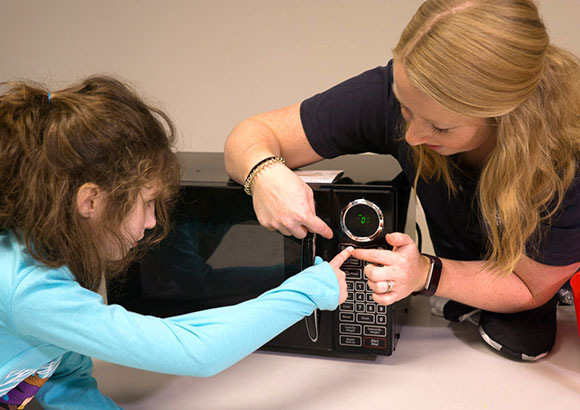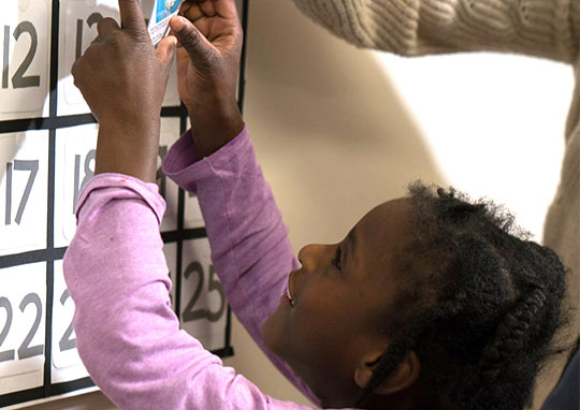Our autism support classrooms are dedicated to providing personalized instruction to students with varying degrees of global delays associated with autism spectrum disorder. These classrooms maintain small class sizes, with no more than eight students per room, ensuring a high adult-to-student ratio. Our educational program encompasses a comprehensive range of skills, communicative, behavioral, social, emotional, academic, motor, adaptive and independent living skills.

Instruction
Our autism support classrooms provide individualized instruction to students with mild to severe global delays associated with an autism spectrum disorder. Class sizes are small, no more than eight students per room, with a high adult to student ratio. Our educational program promotes communicative, behavioral, social, emotional, academic, motor, adaptive and independent living skills.
Learning Environments
Our schools cultivate enhanced learning environments through purposefully designed spaces, including sensory rooms, life skills apartments, vocational labs, therapy rooms, and gross motor movement spaces. Cutting-edge multi-sensory environments (MSE) offer controlled sensory integration using visual, auditory, olfactory, and tactile stimuli, providing calming effects, heightened stimulation, improved socialization, focus, and the development of motor skills and cognition. Vocational labs prepare students for future employment with simulations of office work, service industry tasks, retail operations, and manufacturing activities. Life skills apartments offer realistic settings for practicing independent living skills, encompassing tasks from laundering and cooking to leisure activities.

Terms you will hear
-
Verbal Behavior
Verbal behavior instruction focuses on the function of language over the structure of language. Instead of focusing on verbs, adjectives, and nouns as the primary way to teach communication, verbal behavior focuses on how those words or other communicative actions impact the person and their environment.
-
Differentiated Instruction
Recognizing each student has individualized strengths and needs, differentiated instruction requires teachers to know their students and provide each one with experiences and tasks tailored to improve their learning. Components of DI include teaching with diverse materials, organizing instruction to meet all learner levels and using individual and small-group instruction.
-
Social Skills Instruction
Weekly and daily instruction focuses on teaching students specific behaviors to enhance their social interaction toolbox. Topics include active listening, following directions, meeting new people and more. Instruction follows the Tell-Show-Do-Review model to engage students in active learning.
-
Sensory Integration
A form of occupational therapy to help children with sensory-processing problems cope with the difficulties they have processing sensory input. Techniques are used to strengthen the student’s sense of touch (tactile), sense of balance (vestibular), and a sense of where the body and its parts are in space (proprioceptive).
-
Life Skills Instruction
Life skills instruction equips students with the skills to thrive in the world beyond the classroom. Teaching practical activities of daily living and independence skills enables students to leave school and contribute to their communities and society.
-
Pre-Vocational Instruction
This instructional process takes larger vocational tasks and teaches them in smaller steps using recognizable materials to help students learn faster and with greater accuracy.
-
Intensive Teaching Trials (ITT)
Based upon Applied Behavior Analysis principles, ITT provides students many opportunities for responding during each session resulting in faster learning. Critical components of ITT include a brisk pace of instruction, mixing and varying tasks, interspersing hard and easy tasks and reduction of incorrect responses through errorless correction.


